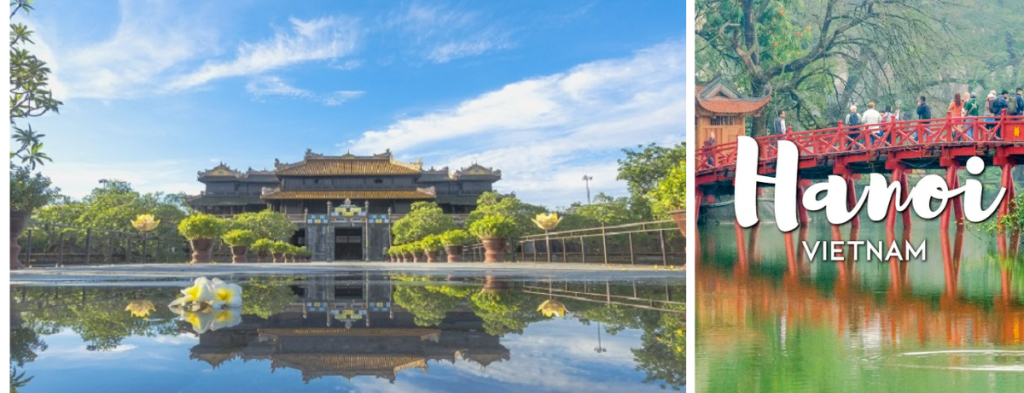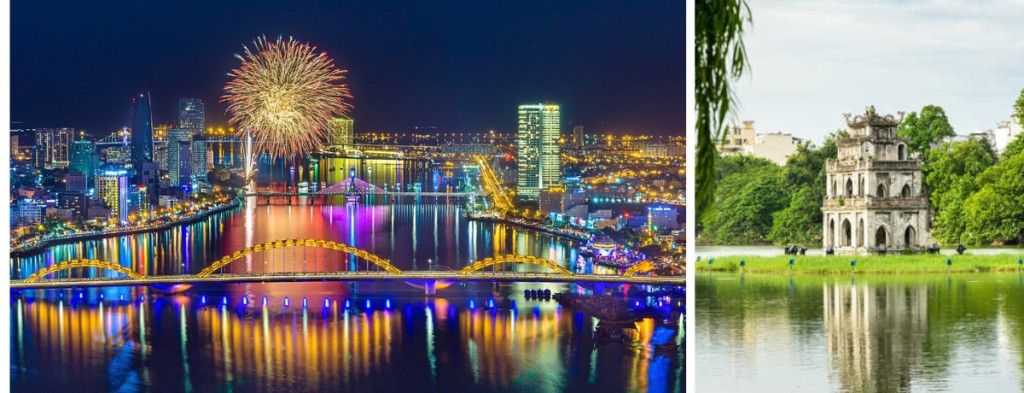Long Biên Bridge is an iconic symbol of Hanoi, Vietnam that showcases human ingenuity and resilience. It was built between 1899 and 1902 during the French colonial period and has played a vital role in the transportation, commerce, and culture of Hanoi.
The bridge spans the Red River and was designed by Gustave Eiffel, the same architect who designed the Eiffel Tower in Paris. It’s an engineering marvel that has survived wars, natural disasters, and the passage of time.
Today, Long Biên Bridge is not only a significant historical landmark but also a cultural heritage site and a popular tourist attraction.
In this blog post, we will explore the history and significance of Long Biên Bridge in greater detail.
Construction and Design
Long Biên Bridge was designed by French architect Gustave Eiffel, who was also responsible for the construction of the Eiffel Tower in Paris.
The bridge was built between 1899 and 1902 during the French colonial period in Vietnam. The construction of the bridge was a significant feat of engineering, as it had to span the Red River, which is prone to flooding. The bridge is 1.68 miles (2.72 km) long and has 19 spans, with a steel structure that rests on massive stone piers.
Sunset in Long Bien Bridge
The sunset view from Long Biên Bridge is a breathtaking sight to behold. The warm glow of the sun as it sets over the Red River creates a stunning backdrop for the bridge’s steel structure. Many tourists and locals alike gather on the bridge in the evening to watch the sunset and take in the beauty of Hanoi. It is truly a magical experience that should not be missed.
Historical Significance
Long Biên Bridge has played a crucial role in the history of Hanoi and Vietnam. During the Vietnam War, the bridge was a critical strategic target for the US military, as it was the only bridge that connected Hanoi to the port city of Haiphong.
The bridge was bombed numerous times by the US Air Force, but it was always repaired and put back into service. The resilience of the bridge became a symbol of the Vietnamese people’s determination to resist foreign aggression.
Cultural Heritage
Long Biên Bridge is not only a significant engineering achievement but also a cultural heritage site of Hanoi. The bridge has become a popular tourist attraction and a favorite spot for photographers and artists.
The bridge’s unique design and its location overlooking the Red River make it a beautiful and picturesque landmark. The bridge’s cultural significance is recognized by the Vietnamese government, and efforts are underway to preserve and protect it for future generations.
Conclusion
Long Biên Bridge is a testament to human ingenuity, resilience, and cultural heritage. The bridge has withstood the test of time, surviving wars, natural disasters, and the passage of time. It remains a vital link between the people and places of Hanoi, and a symbol of the Vietnamese people’s determination to overcome adversity.
Long Biên Bridge is a treasure of Hanoi and Vietnam, a reminder of the past, and an inspiration for the future.
Frequently Asked Questions
What is Long Biên Bridge?
Long Biên Bridge is a historic bridge located in Hanoi, Vietnam. It was built during the French colonial period and spans the Red River.
Who designed Long Biên Bridge?
Long Biên Bridge was designed by Gustave Eiffel, the same architect who designed the Eiffel Tower in Paris.
What is the significance of Long Biên Bridge?
Long Biên Bridge is significant both historically and culturally. It played a crucial role in the transportation and commerce of Hanoi, and it was also a strategic target during the Vietnam War. The bridge is recognized as a cultural heritage site and is a popular tourist attraction.
How long is Long Biên Bridge?
Long Biên Bridge is 1.68 miles (2.72 km) long and has 19 spans.
Is Long Biên Bridge open to pedestrians?
Yes, Long Biên Bridge is open to pedestrians, motorbikes, and bicycles. However, visitors are advised to exercise caution when crossing the bridge due to heavy traffic.
Thank you for reading and we hope you enjoy learning about this amazing structure.













